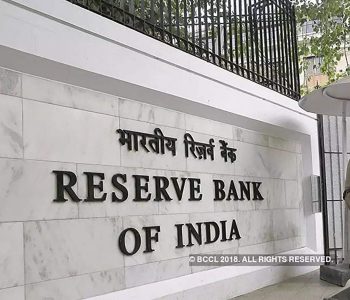Government to boost Nepal’s economy through flexible stock market and real estate policies

KATHMANDU: The current government of Nepal, led by Prime Minister KP Sharma Oli, is advancing policies aimed at generating demand in the overall economy by adopting flexible policies in the stock market and real estate sectors. The government has directed Nepal Rastra Bank (NRB) to formulate a monetary policy aimed at increasing credit expansion to address the issue of low interest rates and excessive liquidity in the banking system.
Prime Minister Oli and Finance Minister Bishnu Poudel have urged NRB Governor Maha Prasad Adhikari to boost the overall economy by invigorating the stock market and real estate transactions. The government believes that the stock market and real estate will play a crucial role in increasing imports, which have been negative for the past two years, by putting money in the hands of consumers.
Building on the budget introduced by the previous government to make the economy dynamic, this administration aims to use new monetary policy as the main tool to boost the declining morale of the economy. Prime Minister Oli himself has urged the leadership of NRB to remove the limit of 120 million and 150 million on share loans and reduce the risk weight of share loans.
In his address to the House of Representatives, Prime Minister Oli stated that since the stock market is a reflection of the economy, it is not necessary to tighten it. The upcoming monetary policy is expected to focus on protecting the interests of small investors by removing the loan limit and setting a target of investing 2 to 3 percent of the total loans in the stock market.
As of the end of May, the stock market had invested 87.11 billion rupees in loans, which is only 1.69 percent of the total loan flow. The flow of loans in the stock market accounting for 1.69 percent of the total loans is not expected to significantly impact the financial stability of NRB.
On the other hand, experts have suggested that NRB does not need to intervene in the stock market since the Nepal Securities Board (SEBON) is a separate regulatory body, and the government seems positive about this suggestion.
The government appears to be in favor of adopting a flexible monetary policy for all loans flowing into the real estate sector, leading to an increased likelihood that NRB will review its past policies.
In the past, large investments were trapped in real estate through banks and financial institutions, causing issues in loan recovery. As real estate remained stagnant, the practice of borrowing to repay loans increased, negatively impacting the overall financial situation of banks and financial institutions, prompting the current government to emphasize the need to make real estate dynamic.
NRB is also positive about increasing the loan-to-value ratio for real estate loans and maintaining the risk weight of non-personal residential real estate loans at 100 percent. Currently, the risk weight for personal residential loans up to 20 million is 75 percent, which bankers have been lobbying to reduce further.
There is a total investment of 12.57 percent in real estate loans by banks, with 385 billion rupees in residential loans up to 20 million and 260 billion rupees in real estate loans. The government has concluded that the economy cannot gain momentum without making such a large exposure of banks dynamic.
During the COVID-19 pandemic, Governor Adhikari adopted a highly flexible monetary policy by issuing new notes under the name of refinancing from NRB and fully opening up all monetary instruments, causing recent economic problems.
Due to the excessive openness of the monetary policy of 2020, there was a problem of over-investment and capital flight in the stock market and real estate. To address this, Governor Adhikari removed the Credit to Capital Deposit (CCD) ratio in 2021 and implemented a 90 percent loan to deposit ratio, and imposed limits of 4 and 12 million on the stock market.
As a result, the stock market, which had reached 3200 points, fell to 2000 points. The conflict between the then Finance Minister Janardan Sharma and Governor Maha Prasad Adhikari, the growing liquidity shortage, and the intervention of NRB to control interest rates by increasing the interest rate of term deposits had a severe impact on the overall economic cycle.
Due to Governor Adhikari’s highly flexible monetary policy, imports continued to increase while the intervention in term deposit interest rates kept loan interest rates low, causing high pressure on foreign exchange reserves. After the reserves decreased due to increased imports, NRB tightened its policy on loans through the mid-term review of the 2021 monetary policy.
To curb rising imports, NRB imposed a cash margin requirement of 50 to 100 percent on letters of credit (LCs) opened for imports. Additionally, the risk weight on share loans, hire purchase loans, real estate loans, trust receipt loans, and overdraft loans was increased to 150 percent.
This policy led to instability in the financial system. The government’s import ban on various 10 items, including vehicles, due to the weak economy resulted in a contraction of the economy in the fiscal years 2022/23 and the previous fiscal year.
Despite claiming to have brought a cautious monetary policy last year, banks and financial institutions faced a profit decline of 28 percent in the first quarter of last year and pressure on capital funds, leading them to continuously lower interest rates on deposits. However, credit expansion did not increase as expected.
Despite the low-interest rates on loans being at a 28-month low and the banking system having excess liquidity of around 700 billion rupees, credit demand has not increased. The lack of credit expansion is mainly due to the guidelines related to working capital loans and the capital funds of banks.
Due to the guidelines on working capital loans brought by NRB, banks have restricted investment in loans. Banks have stopped providing long-term working capital loans under the overdraft category and are adjusting them as term loans and short-term working capital loans as cash credits.
Industrialists and businessmen have complained that they need to rewrite working capital loans. However, an official from NRB stated that there is no possibility of amending the guidelines on working capital loans since they were introduced under the conditions of the International Monetary Fund’s (IMF) extended credit facility.
“The possibility of amending the guidelines on working capital loans is nil. Since the guidelines were brought to prevent the misuse of extended credit, I don’t think the leadership of NRB will be ready to suspend them under any circumstances. If they were strict for so long and then suddenly opened up, it would raise a big question on the governor’s neutral role. Therefore, I don’t think the guidelines on working capital loans will be amended,” said the official.
The official also mentioned that the direction can be taken to make the economy dynamic by using other tools of monetary policy without amending the guidelines on working capital loans.
Since the risk weights of most loans have returned to their previous states and discussions are ongoing at NRB to bring the remaining loan risk weights to the pre-July 2021 status, the leadership of NRB has reached the conclusion to increase the profitability of banks and reduce the pressure on capital funds by making the economy dynamic.
Since banks and financial institutions did not show interest in the preferential shares given to solve the problem of capital funds, Governor Adhikari is positive about making some sectors dynamic to reduce the pressure on capital funds and make the economy dynamic.
Banks and financial institutions have also suggested to NRB to revert the strict measures to their previous states to make the market dynamic.
“We had suggested to the government to make the current economy dynamic in this year’s budget as well. Our suggestion remains the same in the monetary policy. We have always emphasized moving forward by solving the risk weight, working capital loans, and the problems of troubled entrepreneurs and businesses brought by the monetary policy. The banking sector will improve on its own if the economy is dynamic. The banking sector does not need anything specific; we have said that we have no separate demands,” said a banker.
Recently, the loans of construction businesses have become a headache for banks and financial institutions. Due to non-payment by the government, there is a problem with the loans of construction businesses. Since construction businesses have not received payment, they have not been able to pay the principal and interest to banks and financial institutions, leading to an increase in bad loans and a decrease in profits for banks.
Similarly, the reduction in profits and the increase in bad loans have led to higher regulatory provisioning, reducing the retained earnings of banks. Most banks have negative distributable profits, putting pressure on capital funds.
To solve the problems of the construction sector, NRB is planning to take a policy of loan rescheduling and interest capitalization for a certain period. Since construction businesses are being blacklisted due to their inability to repay loans, NRB is also planning to relax the provisions related to blacklisting.
NRB is positive about solving the problems of cement, small, and medium-sized businesses. Due to economic sluggishness, NRB is positive about arranging regular repayment of principal and interest of loans until the production of industries that have stopped production due to economic sluggishness becomes regular.
Currently, there is a provision that requires 100 percent bad loans to be booked and provisioning to be made as soon as the industry shuts down, and to proceed with the process of recovering the remaining loan by accepting the collateral of the industry. Due to the recent economic sluggishness, there is a possibility of being flexible in the process of loan recovery from industries that have stopped production.
There is a possibility of changing the limits of loans to priority sectors through the upcoming monetary policy. As the loan base is increasing, there is a possibility of reducing the percentage of loans in agriculture, hydropower, energy, and small and medium enterprises that were previously prioritized. Since the loans provided to priority sectors have been misused, there is a possibility of determining new priorities through the monetary policy by reducing the current provisions.
In the past two years, the loan flow of banks and financial institutions has been 90 percent compared to the gross domestic product and 79 percent compared to the total loan flow.













Facebook Comment